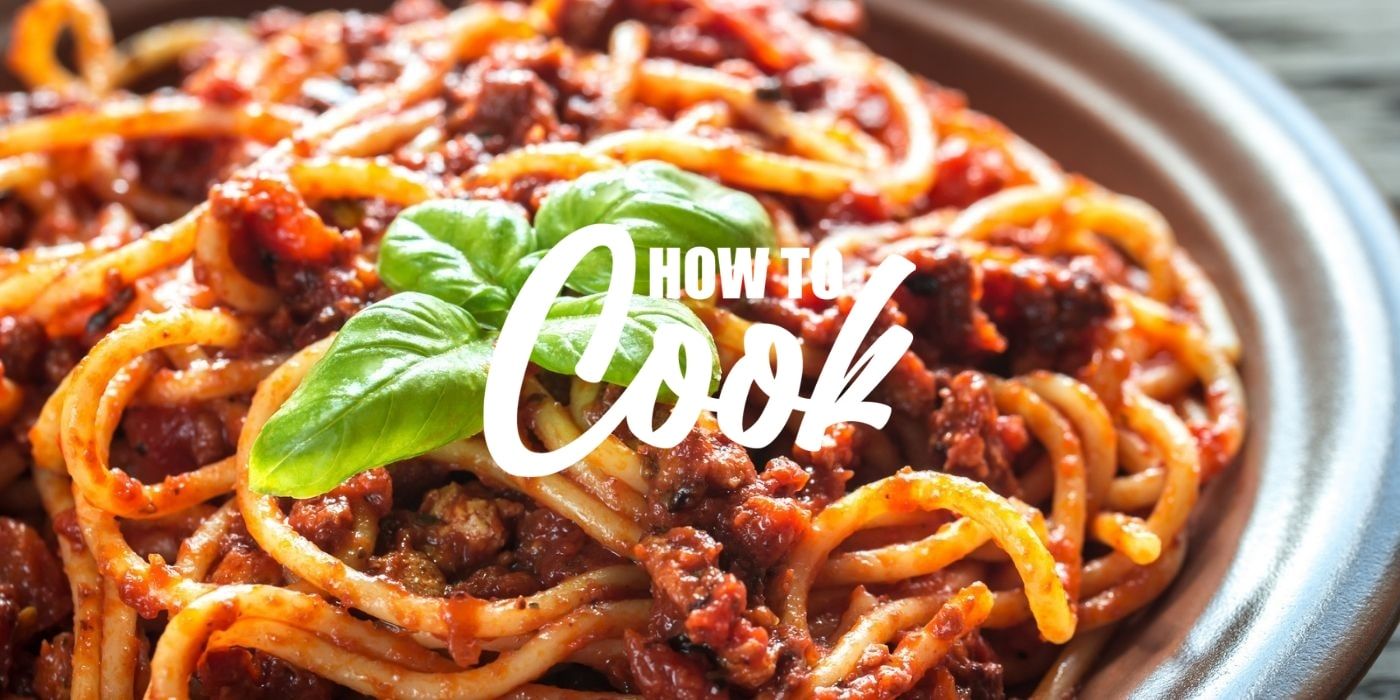There are few dishes capable of getting all diners to agree, and ragù Bolognese is certainly one of them!
With a tomato base enriched with ground meat, this sauce is the ideal preparation for flavoring absolutely mouth-watering pasta dishes.
Those who taste ragù bolognese will undoubtedly remain satisfied. The ideal combination to use would be with tagliatelle or in general long-type pasta, but it is also used for the preparation of lasagna or any other type of pasta coming to mind. The important thing is not letting the purists know!

How to cook a perfect ragù Bolognese? Let's start with history

At the origin of this rich and flavorful sauce is a dispute that has perhaps never really been resolved. In fact, this world-famous culinary preparation is the cause of an argument about it between the Bolognese and Neapolitans, with the latter claiming the first version of the dish actually to have Neapolitan origins.
Apparently, there is a written record dating back to 1773, signed by Vincenzo Corrado. This one, in his book "Il cuoco galante" (literally "The gallant cook"), transcribes a recipe for maccheroni in crosta, involving the use of "ragù" (the Italian for "ragout"), which however did not yet include the use of tomato.
Over times, other ancient writings and testimonies, seeming to suggest the original version of ragù to be originated in Naples, have been collected.
The Bolognese assert, however, that their version is the only "authentic" one because it calls for the use of mince instead of whole pieces of meat, as is the case in Naples. In the end, the fact is that it has been Bologna itself to claim the paternity of this recipe, by depositing it at the Italian Academy of Cuisine in 1982.
Et voilà the game is done: ragù Bolognese is the one of Bologna.

Hand the floor over to Francesco Mattana, Italian Chef and Food Creator of @our_cookingjourney based in London.
Ragù is one of my favorite classics. This recipe is the perfect base for so many incredible Italian dishes, such as lasagna or cannelloni. I have 3 secret to share with you about a ragù.
1. Make the ragù in advance, if you can one day before. The ragù will taste even better from the day after you make it as this will have cool down properly overnight and the flavours will have combine all together making a tastier ragù!
2. In the past, milk was also used to make ragú alla Bolognese to mellow out the gamey taste of the meat during the cooking, but it is something that is no longer or rarely done today. If you wish, you can add a small glass of milk at the end of the cooking. This will also contrast well with the acidity of the tomato.
3. You can slightly season the ragú at the beginning but leave the final touch of salt at the very end when the ragú is ready. If you add the right amount of salt at the beginning the ragù will reduce during the slow cooking and the result will be over salted.
And here is the recipe: let's see how to cook ragù Bolognese step by step
As we have understood then, the fundamental difference between ragù Bolognese and the Neapolitan version consists in the type of meat used. Now we will see together how to prepare an authentic "ragù Bolognese", therefore involving the use of ground meat mixed between beef and pork.
Here are the ingredients (quantity for six diners):
600 gr ground beef;
250 g of ground pork;
700 ml of tomato puree;
1 white onion;
70 gr celery;
70 gr carrot;
3 tbsp extra-virgin olive oil;
100 ml red wine;
50 ml whole milk;
salt;
pepper;
1 sprig of fresh rosemary (your choice).
Now that we have gone shopping, let's look together at the basic steps of preparation.
First of all, you need to finely chop celery, carrot and onion and sauté them for 5 minutes in olive oil. At this stage, if you like its taste, you can add rosemary.
Having done this first step, it is time to add the meat, that should be crumbled as much as possible and browned for 10 minutes.
After this time has elapsed, the wine is added over a high flame. Only when the alcohol has completely evaporated is it time to pour tomato sauce. Once it is emptied into the sauté meat mixture, the bottle should be half filled with water, which rinses out it and goes to add the remaining tomato and a little extra liquid.
The bulk is done! Now it must boil on a low flame for about three hours. The typical recipe also calls for adding milk at the end but, if you don't like it, you can omit it. Then add salt and a pinch of pepper and the ragù is ready to be savored in all its wonderful goodness.
About the author
Written on 28/04/2023



Chiara Spaziano
Have you always wondered about the right way to cook pasta with ragù bolognese? Here is the authentic Italian recipe.